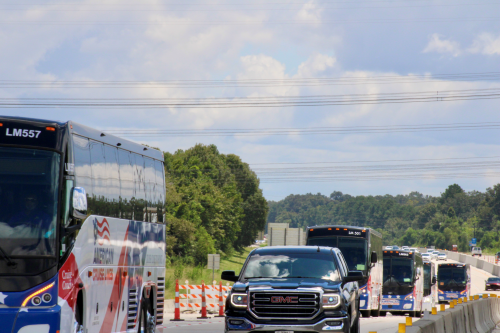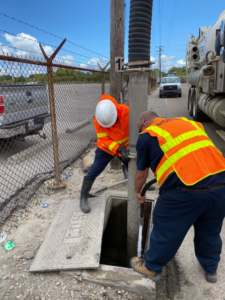A roundup of headlines curated for state transportation environmental professionals
FEDERAL ACTION
Q&A with Secretary of Transportation Elaine Chao – Mass Transit
Trump Reboots Obama Climate Rules by Axing Methane Curbs – Bloomberg Green
Under the radar rollback of stream and wetland protections – The Hill (Opinion)
Trump Administration Finalizes Plan to Open Arctic Refuge to Drilling – New York Times
COVID-19
ETAP Podcast: Arizona DOT Details COVID-19 Impact – AASHTO Journal
SEPTA’s ‘social-distancing coaches’ are the newest part of your commute – Philadelphia Inquirer
Covid Flight From Transit Forces Shift to Riders Without Choices – Bloomberg Government
Partnership Announced To Reduce Litter And Improper Disposal Of PPE – Tennessee DOT (Press release)
Mobility in the Pandemic – and After – UC Davis (Press release)
NEPA
Our Turn: Miriam Goldstein and Kelly Kryc: Rolling back environmental protections will prove costly – Providence Journal (Opinion)
After Almost Four Decades, White House Issues New NEPA Regulations–Lawsuits Likely – National Law Review
INFRASTRUCTURE RESILIENCE AND SUSTAINABILITY
California’s Rich and Desperate Homeowners Are Buying an Unproven Wildfire Cure – Bloomberg Green
Strain on electrical grid shuts down pollution-cutting measure at LA, Long Beach ports – Daily Breeze
Enhanced Vegetation Management Planned For Indy Metro Area Highways – WBIW
As climate change threatens Florida, resilience should not be a part-time job – Florida Times-Union (Editorial)
AIR QUALITY
Watchdogs criticize EPA’s move to approve air quality around Ameren’s biggest coal plant – St. Louis Post-Dispatch
Reports Blast Bay States’ Pollution Diet Plans, Lawsuits Loom – Chesapeake Bay Magazine
Agency OKs $27M to Boost Zero-Emission Vehicles in California – Transport Topics
Citi CEO Says Banks Must Walk If Clients Won’t Reduce Emissions – Bloomberg Finance
ENVIRONMENTAL JUSTICE
Mass Transit’s Role in Racial Justice (Podcast) – Bloomberg
How Environmental Justice Fits Into the Democratic Party Platform – WNYC
NATURAL RESOURCES
Google Maps is tracking the spread of America’s wildfires hour by hour – Engadget
EPA administrator sees farm conservation practices up close – Wisconsin State Farmer
Keeping It Blue: Old septic systems pose a threat to water quality – Lake Geneva Regional News (Commentary)
High Time to Tackle Toxic Algae Blooms’ Source – Trade Only Today (Commentary)
Celebrate bi-partisan leadership on resiliency and water infrastructure – News-Press (Opinion)
CULTURAL RESOURCES
The impacts of gentrification on transportation and social support – Portland State University
HEALTH AND HUMAN ENVIRONMENT/ACTIVE TRANSPORTATION
Bird, Lime and Spin hit Chicago and New York – ITS International
Footwear display in Denver is solemn reminder of pedestrians killed by autos – Denver Post
A Controversial Scooter Data Tracking Program Gains Traction – CityLab
Cyclists work on bicycle routes Adding signage, bike lanes, bike racks – Taos News
TRB RESOURCES/ANNOUNCEMENTS
COVID-19 trends impacting the future of transportation planning and research – TRB
How electric vehicles impact the electric grid – Pacific Northwest National Laboratory
Advances in Unstable Slope Instrumentation and Monitoring – TRB NCHRP (Report availability)
FEDERAL REGISTER NOTICES
Streamlining Procedures for Permit Appeals – EPA (Final Rule)
Proposed Consent Decree, Clean Air Act Citizen Suit – EPA (Notice of proposed consent decree; request for public comment.)
Tribal Technical Assistance Program – FHWA (Notice; request for comments.)
Agency Information Collection Activities; Submission to the Office of Management and Budget for Review and Approval: Driver Interactions With Advanced Driver Assistance Technologies – NHSTA (Notice and request for comments on a request for approval of a new information collection.)





